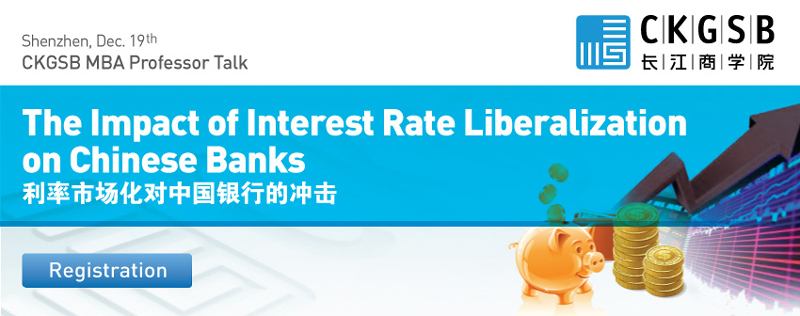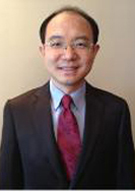
The banking system is called on to provide both growth and stability for the economy and change is viewed with caution. Nowhere is this more true than for the cost of borrowing, interest rates.
In recent years, Chinese banks have witnessed a dramatic shift in this area as they moved away from strict state mandates to responding to the market. The 2011 Wenzhou private lending crisis renewed efforts for interest rate liberalization reform which had been long shelved. In July 2012, the People’s Bank of China declared asymmetric interest rate cuts for the first time, foreshadowing the start of deposit and loan interest rate liberalization.
As interest rate policy effects consumers, businesses, and the vitality of the banking system as a whole, what do these changes mean?
Join Prof. Ouyang Hui on December 19th as he analyzes the changes in banking industry structure and profitability during the American and Japanese interest rate marketization reforms and forecasts what shocks to expect in the future with Chinese interest rate marketization.
| Time: |
19:30 – 21:00 (Beijing Time) – Wednesday, December 19th
Registration starts at 19:00
|
| Location: |
CKGSB Shenzhen Campus (East Pacific International Center, Tower A, 31/F
7888 Shennan Road, Futian District)
|
| Entrance Fee: | FREE, Pre-registration Required |

Professor of Finance
Ph.D., University of California, Berkeley
Ph.D., Tulane University
Ou-Yang was voted the best teacher by Duke’s Global Executive EMBA Class of 2004. He won the second best paper award presented by Review of Financial Studies in 2003 as well as the best paper award (joint with Henry Cao) presented by the Society of Quantitative Analysts in 2005.
Research Areas: Asset Pricing, Corporate Finance, Integrated Models of Asset Pricing, Moral Hazard